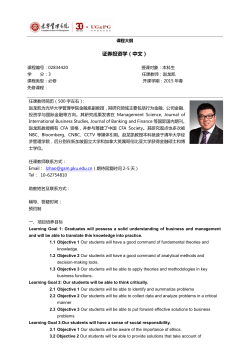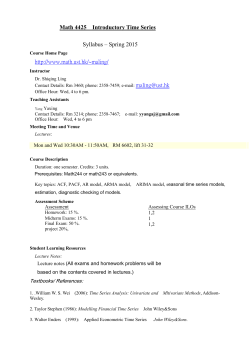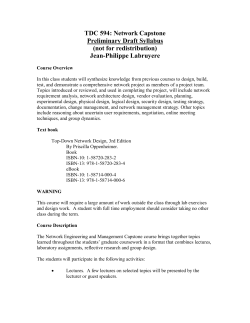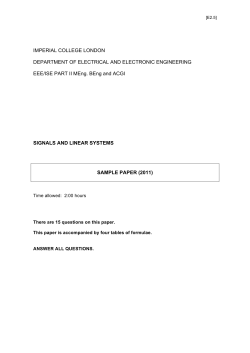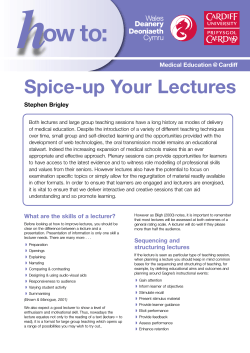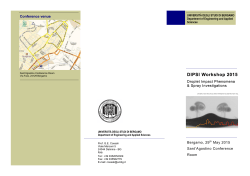
here - Women, Gender, & Sexuality in Middle East History
History 3320: Women, Gender, and Sexuality in Middle East History Professor Ziad Abu-Rish Study Guide for Final Exam v Details for Final Exam • The following is a list of all possible final examination questions. You should use this study guide as the basis for your early preparation for the final exam in this course. • On Friday 24 April, you will receive an email identifying 5 short-essay questions and 15 identification terms, all drawn from this study guide. It is these questions for which answers will be due as a take-home exam. • Your final exam will be due via email to me (abuz@ohio.edu) at 12:10pm on Monday 27 April 2015. • The midterm exam will be made up of two parts (see below for additional info) v Part 1: Five (5) of the following questions will appear on the final examination. Your answers should be well-organized so address the entirety of the question. A wellwritten and responsive answer should range in length between 300 and 500 words. Yet ultimately, your answer will be evaluated based on its content. 1) Discuss the process of defensive developmentalism that state elites in the Middle East and North Africa undertook during the late 19th and early 20th centuries. How would you define this process in terms of its goals and overall dynamics? What policies represented the core of defensive developmentalism? Compare and contrast the effectiveness of defensive developmentalism and its ultimate outcome in Egypt, the Ottoman Empire, and Qajar Persia. 2) In thinking about the relationship between gender and empire in the modern period, we have considered the two cases of French Algeria and British Egypt. Drawing on the readings and lectures for that week, compare and contrast the gendered elements of European imperialism in the Middle East and North Africa during the late 19th and early 20th centuries. Your answers should identify the key issues at stake in general, provide a clear understanding of the different contexts of British rule in Egypt and French rule in Algeria, and explain how those differences had their reverberations in gendered policies of the colonial encounter. Be sure to consider examples of how gender was involved in both questions of representation and question of governance. 3) The late 19th and early 20th century featured the emergence of a variety of discourses and practices about gender and modernity. One of the key arenas for this dynamic was centered on the idea of "the new woman." Drawing on readings and lectures, outline the specific characteristics of this "new woman," paying careful attention to the various roles women were to assume in the modern world, the various institutions created to support that new role, and how this new role fundamentally different from the pre-modern period. Your answer should also attend to the variety of economic, social, and cultural transformations that manifested in the late 19th and early 20th centuries—which either made possible these new roles or were 1 History 3320: Women, Gender, and Sexuality in Middle East History Professor Ziad Abu-Rish partly a consequence of these new roles. 4) Gender dynamics do not only affect women, but men too. Discuss the ways in which discussions and practices of physical culture, modernity, and manhood among middle-class Egyptians developed during the late 19th century and early 20th century. [Hint: In addition to in-class lectures, you will want to refer to the chapters by Wilson Jacob]. 5) Women’s movements have a long history in the Middle East and North Africa region, dating back to the 19th century. Discuss the broad contours of the emergence and development of women’s movements in the region, paying particular attention to their organizational form, objectives, and tactics. Your answer should include references to specific examples drawn from the readings and lectures. [Hint: In addition to in-class lectures, you will want to refer to the chapter by Ellen Fleischman.] 6) Compare and contrast the gender-specific policies of the FLN in Algeria, the People’s Democratic Republic of Yemen, and the Islamic Republic in Iran. How do these three cases highlight the similarities and differences of how post-colonial regimes sought out women as a target of state policies? Your answer should address the specific ways in which women (i.e., female citizens) were variously conceptualized in terms of the culture, politics, and economics of the country, the state policies that targeted them, and the effects of those policies. [Hint: In addition to in-class lectures, you will want to refer to the chapter by Valentine Moghadam.] 7) How do we explain the resurgence of veiling in the Middle East and North Africa? Your answer should attend to the multiple of levels of analysis (i.e., international, regional, national, and personal) that were covered in readings and lectures dealing with the issue. [Hint: In addition to in-class lectures, you will want to refer to the chapters by Leila Ahmad.] 8) Some scholars have argued that it is not sexuality as a totalizing realm of identity and practices that were the target of pre-modern Islamic law, but rather specific acts. Using the issue of sodomy and same-sex relations, explain why such a claim might make sense from a historical perspective? [Hint: Your response to this question will only be based on in-class lectures.] 9) Reflecting on your experience in this course, what are three assumptions you had about women, gender, and sexuality in Middle East history and how were those assumptions either challenged or affirmed in this course. Your answer should include a very clear articular of what each assumption was, what parts of the course (lectures and readings) directly or partially address them, and (given the first two points) how and why that assumption has changed or been reinforced. [Warning: Do not underestimate the seriousness of this question.] 10) Based on what you have learned in this course, how would you respond to the following statement: “Women in the Middle East, unlike those in the West, live in a constant state of oppression. They have been oppressed for centuries, in large part due to a culture of tribalism and the religion of Islam.” [Warning: Do not underestimate the seriousness of this question.] 2 History 3320: Women, Gender, and Sexuality in Middle East History Professor Ziad Abu-Rish v The following fifteen (15) terms will appear on the final examination. You will have to identify each term and explain its significance re what we have covered in this course. Give dates only for those terms marked with an asterisk (*). An adequate identification and explanation should range in length between 50 and 150 words. Yet ultimately, your answer will be evaluated based on its content. Defensive Developmentalism Conscript Army Unmediated State Gender as Cultural Marker Edward Lane’s Manners and Customs of the Modern Egyptians* The New Woman Al-Sayyida al-Istihlakiyya Manager of the House The New Man Effendiyya Al-Riyada al-Badaniyya (Physical Culture) Qasim Amin* Halide Edib* Three Stages of Development for Women’s Movements in the Region NGOization of the Women’s Movement 3
© Copyright 2025
